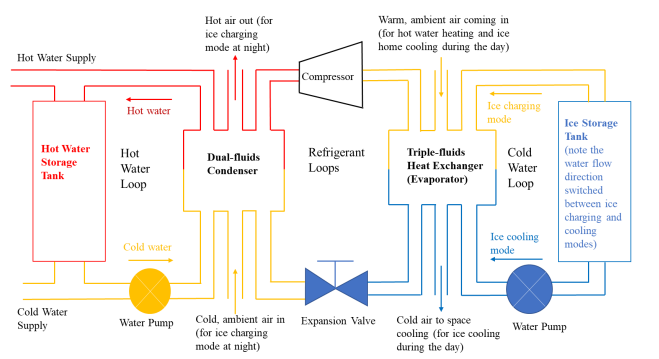Green Energy Buildings with Integrated Space Heating, Cooling, Hot Water, Heating, and Thermal Storage
This system idea combines heating and cooling systems in buildings with an innovative thermal energy storage system. It provides space heating, cooling, and hot water heating while also acting as a load shift and a load shed as needed by the power grid. Making buildings more grid-interactive will help develop the widespread use of renewable energy.
Problem
Renewable energy’s intermittent nature makes energy generation fluctuate more compared to traditional power plants. A system is needed to store the energy that the power plants generate when energy demand is low to be used when energy demand is high. This helps reduce the stress on power plants during times of peak energy demand.
Solution
The integrated thermal storage is a year-around system, creating the possibility of having buildings continuously powered by wind and solar energy. This new, green energy system will achieve significant energy and cost savings for building owners. Using thermal energy in ambient air to heat hot water through a reversible heat pump will greatly reduce electricity and natural gas consumption in residential buildings as well.
Benefits
Potential benefits of commercializing this technology include less stress on renewable energy plants, more widespread use of renewable energy, and reduction of natural gas and electricity consumption in commercial and residential buildings.
Applications
The green energy storage system can be applied in the heating and cooling systems of buildings and homes.

Contact
Questions about this technology including licensing availability can be directed to:
Alan Edwards, MA, JD
Manager, Technology Transfer Services
(435) 797-2328 alan.edwards@usu.edu
USU ID C21015, 20021
Development Stage
TRL 2
Publications
“Modeling and optimization of integrated energy-water systems using SMRs,” -Transactions of the American Nuclear Society, Volume 124, Issue 1, Pages 472 – 475.

